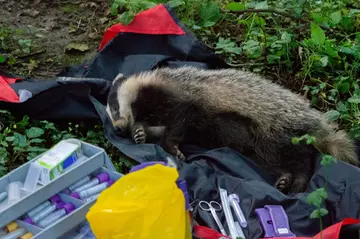
ZSL is delighted by today’s news that the government has pledged to end badger culling by 2029. This change in approach has been informed by research led by ZSL’s Professor Rosie Woodroffe, who has been investigating the effectiveness of farmer-led badger vaccination for many years.

ZSL, a science-driven conservation charity, has been at the forefront of research into bovine TB for more than 40 years - since Lord Zuckerman chaired the first independent review into badger culling in 1980 during his ZSL Presidency.
Bovine tuberculosis (bTB) in cattle is a devastating disease, with a huge impact on farmers and their livelihoods. Since 2011 – when the government set in motion its plan for a badger cull in England - ZSL has been focussed on understanding how transmission occurs and finding practical solutions to overcome the causes of bTB infections, including whether vaccinating badgers could offer a more effective and affordable alternative to culling.
ZSL has long advocated for an end to badger culls, with our science demonstrating that culling alone was never going to eradicate bTB in cattle.

recent study into the efficacy of badger vaccinations, a partnership with farmers in Cornwall, indicated the percentage of badgers testing positive for bovine tuberculosis (bTB) in the study area dropped from 16% to 0%. The paper highlighted that vaccination can be delivered in ways which are practical, cost-effective, and acceptable to farmers.
Previous research of ours has also shown that culls can actually lead to increases in infected cattle around the edges of badger cull zones, and increased rates of TB in badgers that escape the cull. Our research showed that surviving animals tend to roam more widely as territory opens up – covering 61% more ground – which may in turn be spreading the infection over wider areas.
We are thrilled that our efforts and our research have been recognised by the government, and that they want to implement a vaccination strategy to protect both cattle – and therefore farmers - and badgers.
